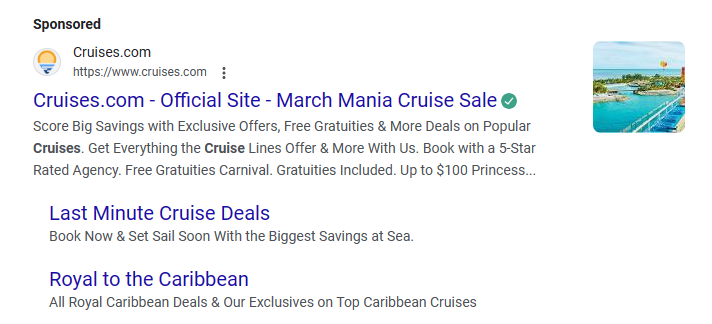
Are you looking for an innovative, low-cost way to attract more customers to your brand? Or, are you a marketer interested in generating a new income stream? Digital affiliate marketing might be the solution you’re looking for.
Digital affiliate marketing connects brands with creators who work to promote a company’s products and services. With more people than ever looking to influencers and other online content creators for recommendations and lifestyle advice, affiliate marketing is a critical tool in any marketer’s kit.
Here’s what you need to know about affiliate marketing.
The basics of digital affiliate marketing
Affiliate marketing for digital products isn’t new. It’s been around for several decades, and Amazon is credited with introducing it in 1996 through its Associates Program.
Since then, further developments like cookies, which track an individual’s browsing history and activities, and additional affiliate networks have turned affiliate marketing into a $14.3 billion industry.
But what is affiliate marketing in digital marketing?
Essentially, affiliate marketing is a strategy where bloggers, social media influencers, and other creators work to promote a brand’s products or services to their audiences. They earn a commission from the brand every time a consumer takes a specific action.
The action might be signing up for an email list, downloading an app, visiting a website, or making a purchase. Typically, there is no guarantee of payment from the brand unless the creator delivers quantifiable results.
Affiliate marketing is a great way to get your brand in front of interested consumers without building an audience yourself. For creators, affiliate marketing is an opportunity to earn unlimited passive income.
The 3 models of affiliate marketing
There are three main types of affiliate marketing. Understanding each can help you decide which is right for you, whether you’re a creator or a brand.
1. Unattached
Unattached affiliate marketing occurs when there is no connection between the brand and the creator. The creator isn’t familiar with the brand’s products or services and is simply trying to earn some extra cash.
Typically, unattached affiliate marketers run pay-per-click (PPC) campaigns, hoping that consumers will click on a link and convert to customers.
2. Related
In related affiliate marketing, a creator is an authority in a specific niche or industry. Brands seek to leverage the creator’s audience and authority by asking them to recommend their products or services, even if the creator hasn’t used them before.
Related affiliate marketing typically generates more income for creators, but it does pose a reputational risk if the brand’s products or services aren’t of high quality.
3. Involved
Involved affiliate marketing is a partnership between a brand and an influencer who firmly believes in the company’s products and services. The creator has a loyal following that trusts their recommendations and uses their influence to promote the company’s products and services.
Involved affiliates receive a commission on sales, clicks, or other conversions.
Participants of affiliate marketing
There are four parties involved in affiliate marketing.
- Affiliate: The individual promoting a brand’s product or services
- Merchant: The brand selling products or services
- Affiliate network: An intermediary that oversees the business connection between affiliates and merchants
- Customer: The person who takes action on an affiliate’s promotional material
Sometimes, affiliates and merchants partner directly with one another without the help of an affiliate network. However, affiliate networks provide a platform for affiliates and merchants to connect without lots of legwork.
Common affiliate marketing payment methods
There are several different affiliate marketing payment structures, and it’s important to know how each one works before striking up a new partnership.
- Cost per action (CPA): The affiliate receives a commission whenever a customer takes a specific action, such as signing up for an email newsletter or a trial.
- Cost per click (CPC): The brand pays the affiliate whenever a customer clicks on a promoted link.
- Cost per lead (CPL): An affiliate earns a commission whenever their promotion results in a new business lead for the brand.
Brand affiliates can use the earnings per click (EPC) metric to measure the average amount of money they make every time a customer clicks on their promotional links.
Getting started with affiliate marketing
Affiliate marketing can offer major benefits to everyone involved.
By leveraging an affiliate’s expertise or influence, brands can save money and time. Plus, they’ll get the opportunity to get their products and services in front of an audience, which may lead to a revenue boost. Affiliate marketers, on the other hand, benefit from passive income generated through their recommendations or CPC strategies.
Whether you’re hoping to integrate affiliate marketing into your brand’s marketing strategy or you’re an online creator looking to get into becoming an affiliate, there are a few key steps you should take to get started.
1. Select a niche and target audience
There’s tremendous competition in affiliate marketing. As a new affiliate, you’ll have much better luck if you specialize in a topic you are passionate or knowledgeable about. Being seen as a reliable voice in your field is important, especially for related and involved affiliate marketing.
As a brand, you’ll want to look for creators whose audiences align with yours. Pet stores, for example, should look for popular accounts that post about their dogs. The more specific the niche, the more likely the affiliate’s followers are to give your business a try.
2. Find suitable affiliate products to market
Once you define your niche and target audience, choose the most relevant e-commerce products to promote.
Affiliates should search for items or services that relate to their niche. For example, if your niche is fitness, you could promote exercise machines, running shoes, or personalized training services.
Brands, on the other hand, should decide which particular products or services to highlight. Giving a clear call-to-action (CTA) and a specific conversion target will often yield better results than general brand awareness.

3. Join digital marketing affiliate programs
Joining an affiliate network makes it easier for brands and affiliates to get connected. Several well-known networks include ClickBank, Amazon Associates, and Etsy Affiliates. Most are open to anyone who wants to join but check program requirements to determine your eligibility.
4. Build your affiliate marketing strategy
Determine your affiliate marketing strategy based on how you plan to build your audience.
If you or your affiliate already has a large social media following, you can focus your efforts on those existing networks. If you’re starting from scratch, you may want to start with blogs or long-form articles to capture search engine traffic.
5. Set up your affiliate marketing website
Making a website devoted to your niche and writing relevant content for it can give creators plenty of opportunities to link to promotional products. It’s also a great place to share a portfolio of past material, if you have some.
Content creation guidelines for affiliate marketers
Affiliate marketers rely on content to promote a merchant’s products or services. Content marketing can include blog posts, articles, videos, pictures, emails, and anything else a consumer can view.
Including promotional links within your content is the meat of any affiliate marketing strategy. Make sure that links are clearly visible and include a strong CTA that encourages a reader to click.
Advanced affiliate marketing strategies
As you build your skills as an affiliate marketer, you can incorporate more advanced strategies into your marketing toolbox. Here are a few to consider.
Influencer marketing
You’ve probably seen celebrities and others recommending products they use on social media or other channels. That’s known as influencer marketing, and it’s a very profitable income stream for people with large followings. To become an influencer, focus on creating content that attracts followers. As your audience grows, your marketing opportunities will too.
Blogging and content marketing
Blogging is an effective way to build an audience if you stick with it. Choose a niche to blog in, and regularly create related content that attracts readers. As you build an audience and increase clicks, you can start promoting products for merchants and earn affiliate income.
Email marketing
Email remains a fantastic tool for connecting directly with followers. Use other platforms to promote your email marketing list, then send promotional messages to your subscribers. Be sure to include lots of content related to your audience’s interests so your emails are valuable to them even if they don’t act on your affiliate links.
PPC and paid advertising
PPC affiliate marketing aims to generate clicks and conversions from paid ad placements on search engines and other channels. It’s a great way to get a new partnership off the ground and start driving traffic to an affiliate website.

Video marketing and webinars
You might consider video affiliate marketing or webinars if you’re a credible authority in a niche and feel comfortable talking on camera. Both channels allow you to pre-record content and share it with followers.
During your video or webinar, you can recommend merchant products or services and include links for your audience to take action.
Coupons and deals to enhance affiliate offers
Few people will turn down the opportunity to save money or score a free product, especially if it’s for something they need or want. Ask merchants if they’ll let you promote their products with a coupon code or deal. If they approve it, you may see higher audience engagement.
Product reviews and demonstrations
Affiliate marketers who use the products or services they’re promoting can craft reviews and share them with their followers. Their honest feedback can encourage consumers to take action and further investigate products.
Maximizing affiliate revenue
Affiliate marketing is a numbers game. The larger your audience, the higher your click-throughs and earning potential.
However, even if you’re starting from scratch, you can still make a respectable income from affiliate marketing. You’ll see the best results if you define your niche marketing strategies and work on developing a following. If you’re just getting started and are still building your audience, consider PPC or paid advertising affiliate marketing.

Common challenges and solutions
You may run into a few issues as you navigate affiliate marketing. Here are a few common ones and how to address them.
Dealing with competition and market saturation
Certain industries and markets have a lot of competition, and you may find it an uphill battle to compete against others with large audiences and followings. Don’t let that discourage you.
Instead, carve out a niche within your chosen market. The more defined your niche, the easier it will be to generate an audience.
Navigating legal considerations
Whenever you recommend a product or earn a commission from a link, it’s essential to disclose that in your content. Most social media platforms, including Facebook, Instagram, and YouTube, require disclosures when sharing affiliate marketing links. You should also include a disclosure on any blogs or articles you write.
Building trust and credibility
Don’t spam your followers with product recommendations and affiliate links. Too much promotion and they’ll stop paying attention and may unfollow you. Focus on delivering valuable content that connects with your audience. By building trust, your audience will take your recommendations seriously.
Tools and resources for affiliate marketers
Affiliate marketers seeking to maximize their income can benefit from software and tools designed to optimize campaigns.
One solution is Constant Contact, which includes email, SMS, and social media tools designed to streamline your marketing processes. Constant Contact also includes a customizable analytics tool to measure performance.
Whether you’re a business owner searching for help promoting your products or an aspiring affiliate marketer, there are plenty of tools to support your efforts. Here are a few to check out:
Take the next step with affiliate marketing
Affiliate marketing is an amazing way to earn passive income or elevate your brand’s revenues. It has unlimited earning potential, and for growing companies, it’s an easy way to get your products in front of an audience that will appreciate them.
To learn more about freelance digital marketing vs affiliate marketing, check out Constant Contact’s guide to digital marketing. Or, go one step further and join Constant Contact’s business partner program to get access to all the tools you need for successful affiliate marketing.




